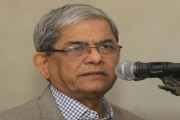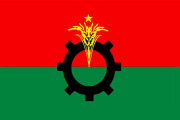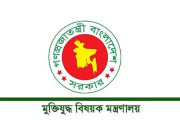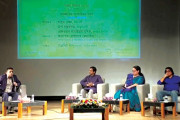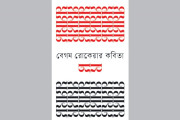IRRAWADDY: The combined effects of the COVID-19 pandemic and the military takeover have sent Myanmar into a downward spiral into poverty, according to the United Nations, with nearly half of the country’s more than 54 million people expected to be poor by early next year, at which time poverty in urban areas will have tripled since the crises began.
In its latest report, the UNDP said the number of people living in poverty in Myanmar is likely to return to levels not seen since 2005, effectively erasing the benefits of the unprecedented economic growth seen in the period before COVID-19 emerged.
The November report, “Impact of the Twin Crises on Human Welfare in Myanmar,” builds on the UN agency’s reports published earlier this year on the impacts on the country of COVID-19 and the coup, and another national survey with 1,200 respondents conducted from May to June on how households are being impacted.
It insists that about 46 percent of the population in the country could be living below the national poverty line by early 2022, reconfirming the pessimistic scenario from the earlier report published in April this year.
Myanmar was reeling from the coronavirus when its military seized power from the country’s democratically elected government in February this year. Since then, the Southeast Asian nation has been in political, social and economic turmoil as people have resisted military rule. Western democracies slapped the regime with economic sanctions, and foreign investors who had entered Myanmar under the Daw Aung San Suu Kyi-led civilian government left the country one after another. Reasoning that the political instability had made it too difficult to do business, they pulled out, leaving many jobless.
The report provides an updated set of assumptions on the impact of the economic crisis due to the military takeover, predicting reductions of 50, 25, 25 and 10 percent in non-farm business income, wages, agricultural income, and remittances and social transfers, respectively.
It explains that unlike COVID-19, a crisis that is assumed to be temporary, the effect of the ongoing political crisis is set to be longer in duration and more severe in magnitude. This would result in a significant slowdown and further reduction in income-generating activities, it added.
The report predicts that the urban poverty headcount could increase threefold, coupled with additional increases in rural poverty.
“As a direct result of this, the poverty headcount is expected to spike in more urbanized states and regions such as Yangon and Mandalay. Poverty is also expected to increase in the traditionally poorest parts of Myanmar (Chin and Rakhine), rendering poor over two-thirds of the people living there,” it says.
Furthermore, the report also warns that the rising levels of poverty are likely to affect access to nutrition, health and education, negatively impacting the human capital of the generation to come.
“With over half of the children in the country projected to be living below the national poverty line, there are worrying trends which are likely to worsen the quality of human capital of the next
generation,” it says.
These trends are arising because the increase in poverty is forcing people to adopt negative coping strategies. For example, over two-thirds of households have started cutting down on non-food consumption, with an additional third of households reducing food consumption, the report explains.
“Moreover, while a fraction of the population has relied on savings and borrowing to make ends meet, the feasibility of these coping mechanisms is decreasing. In addition, close to 40 percent of households who have used savings have no savings left,” the report says.
Meanwhile, the regime is trying to reopen some state-owned factories that were shut down by the previous government due to high running costs and low profit generation, while pressuring the business community to promote local productivity.






















